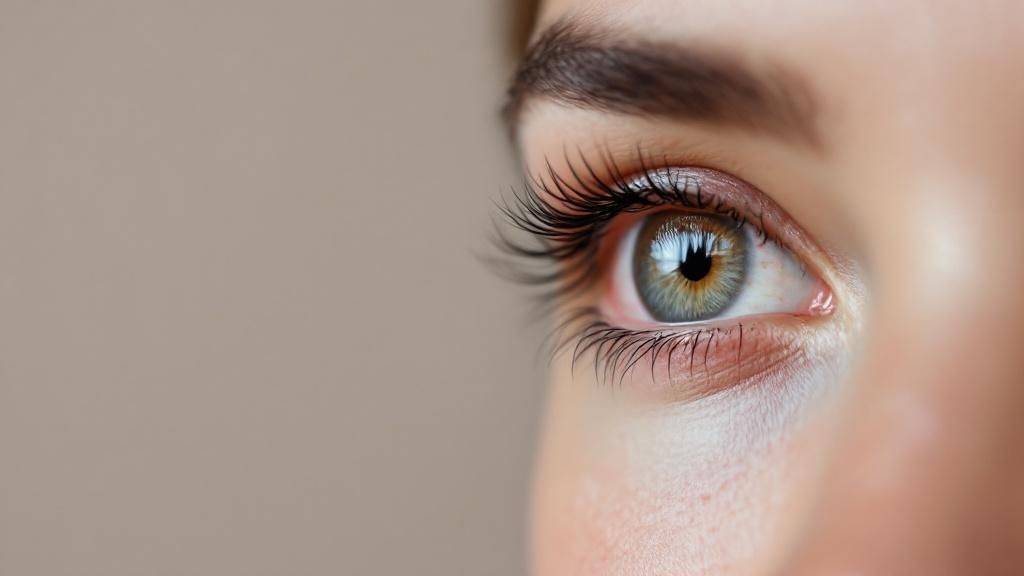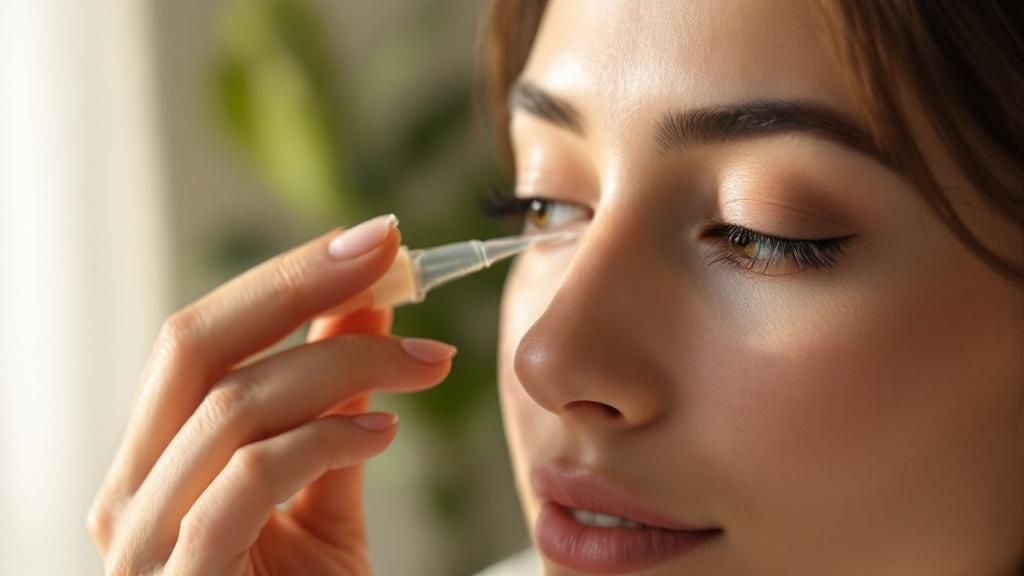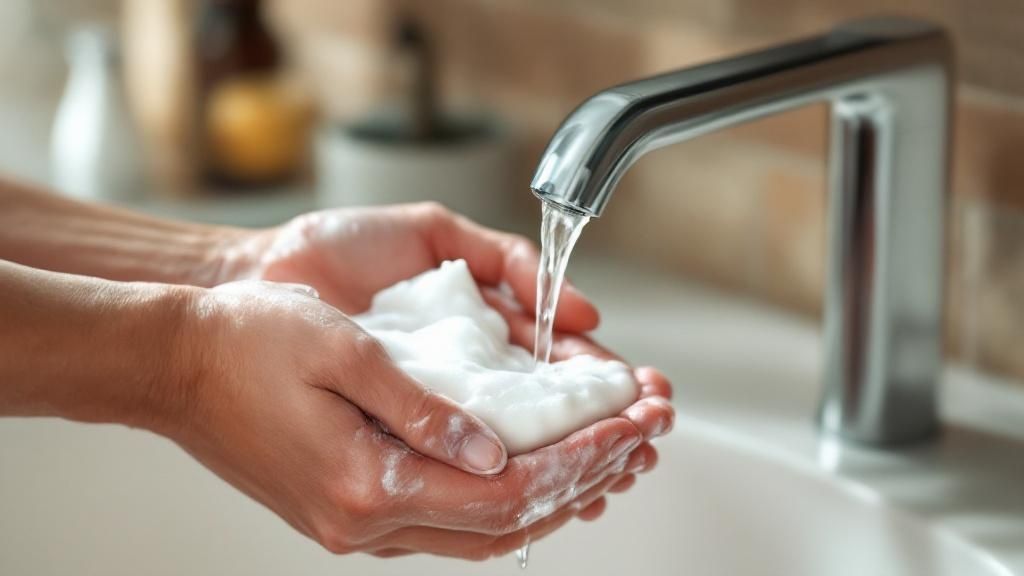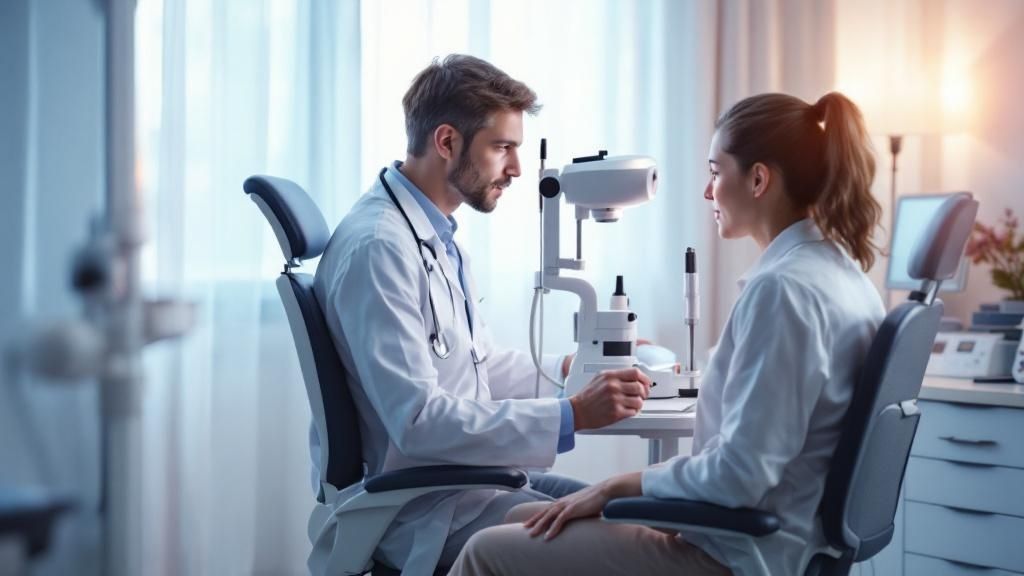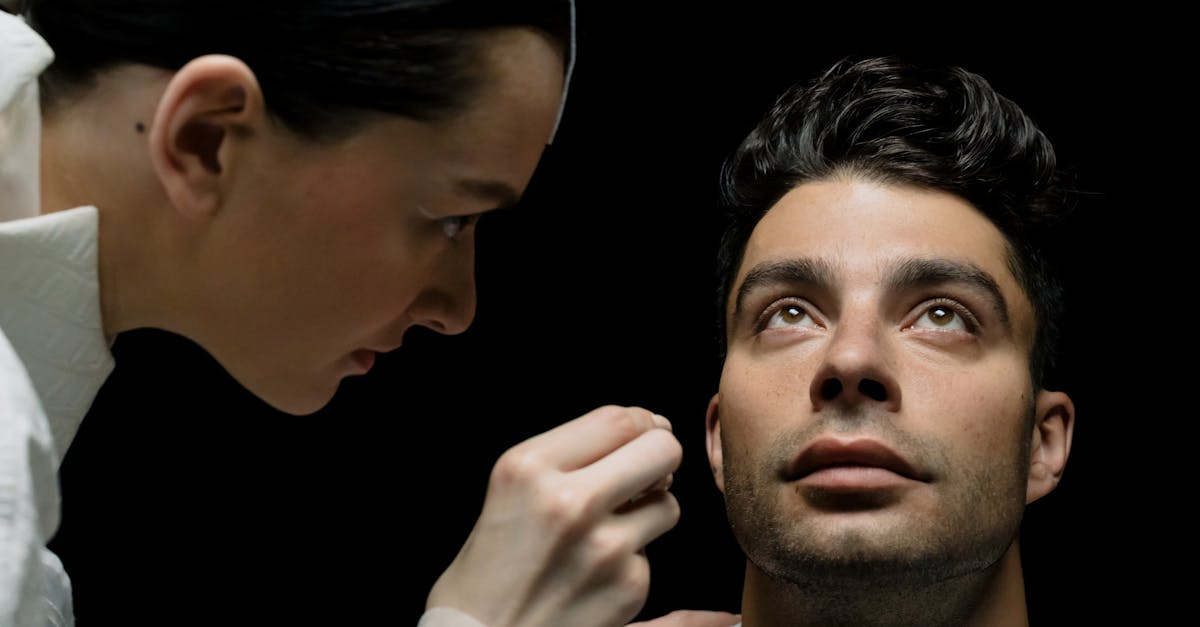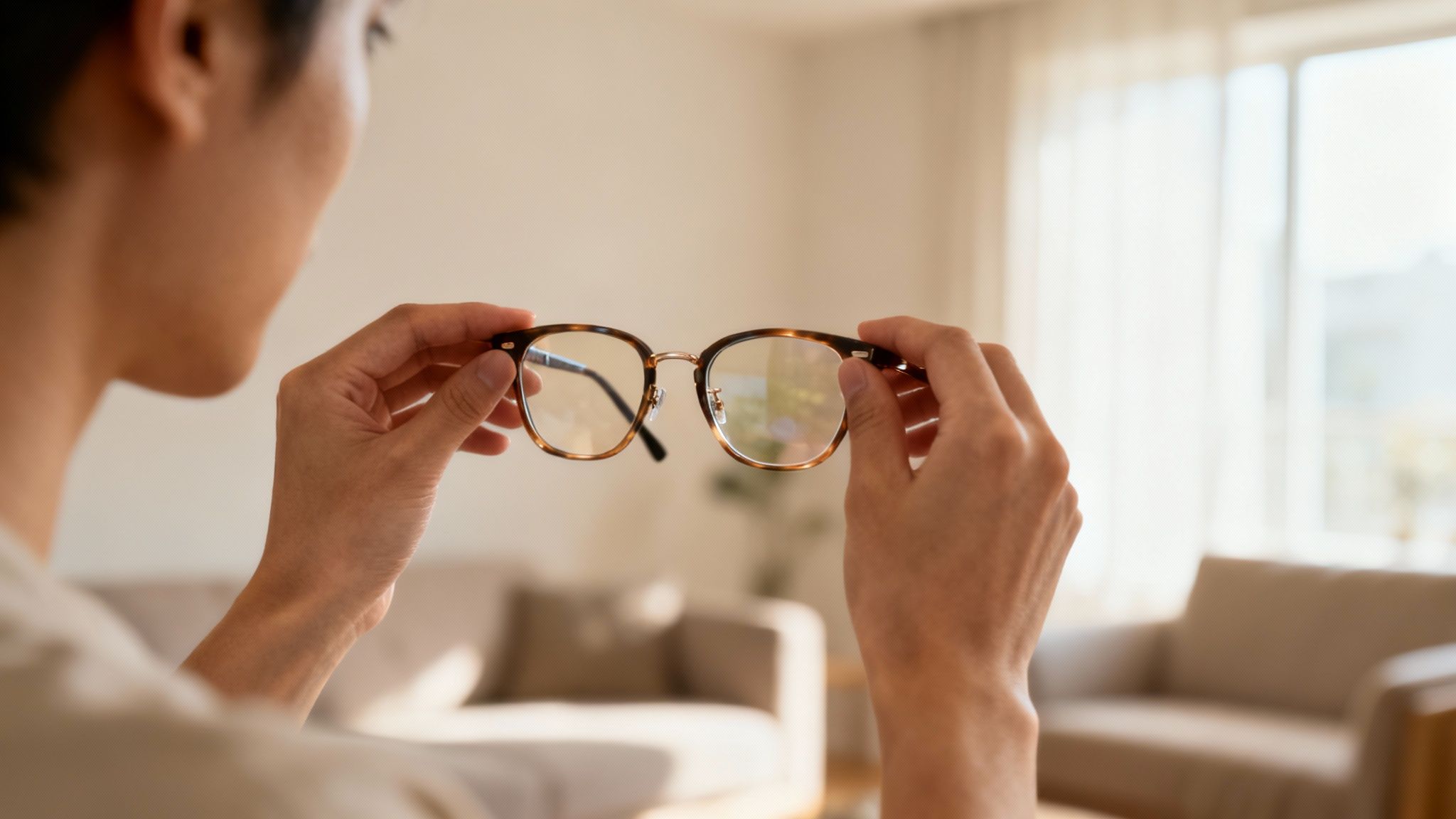Waking up to red, itchy, or goopy eyes is always a little jarring. The first thought is often "pink eye," but the key to feeling better fast lies in figuring out what kind of pink eye you're dealing with. The best treatment for conjunctivitis—the official name for pink eye—depends entirely on whether it's caused by a virus, bacteria, or an allergy. Knowing the difference is your first and most important step toward relief, and our team at iDoctor in Glendale Heights is here to guide you.
First Steps for Pink Eye Relief in Glendale Heights
If you're in Glendale Heights or a neighboring town like Carol Stream and you think you have pink eye, your initial move should be to carefully assess your symptoms. Conjunctivitis isn't one-size-fits-all; it’s an inflammation of the conjunctiva, which is the thin, clear tissue covering the white part of your eye. The right treatment all comes down to what's causing that inflammation.
The three main culprits behind conjunctivitis each have their own signature calling cards. Once you have a better idea of what you're up against, you and your eye doctor can map out the most effective plan.
Identifying the Cause of Your Pink Eye
Pinpointing the type of pink eye you have is critical because it determines the entire treatment strategy. Here’s a quick rundown of what to look for:
- Viral Conjunctivitis: This is the most common type and often shows up with a cold or respiratory infection. You'll likely notice a watery, clear discharge, a gritty feeling in one or both eyes, and significant redness.
- Bacterial Conjunctivitis: The tell-tale sign of this one is a thick, sticky discharge that's usually yellow or greenish. It’s notorious for making your eyelids feel "glued" shut, especially when you first wake up.
- Allergic Conjunctivitis: If your eyes are intensely itchy, allergies are the probable cause. Triggered by things like pollen, pet dander, or dust mites, this type usually affects both eyes and comes with puffiness and watery discharge.
To help you get a clearer picture, we've put together a simple table comparing the three most common types.
Pink Eye at a Glance: Viral vs. Bacterial vs. Allergic
Use this quick comparison of the three most common conjunctivitis types to better understand your symptoms.
| Symptom/Feature | Viral Pink Eye | Bacterial Pink Eye | Allergic Pink Eye |
|---|---|---|---|
| Itchiness | Mild | Mild to moderate | Intense |
| Discharge | Watery, clear | Thick, yellow/green | Watery, stringy mucus |
| Contagious? | Highly contagious | Highly contagious | Not contagious |
| Other Symptoms | Often with cold/flu | Sometimes with ear infection | Sneezing, nasal congestion |
| Affects | Usually starts in one eye | Can affect one or both | Usually affects both eyes |
This table is a great starting point, but keep in mind that symptoms can overlap. Professional guidance from an optometrist is always the best way to be certain.
alt text: Chart showing the prevalence of viral, bacterial, and allergic pink eye in Glendale Heights
As you can see, viral pink eye is not only more frequent but also tends to stick around longer than the bacterial version, which is another reason why a correct diagnosis is so important.
Why a Professional Diagnosis in Glendale Heights Matters
It's really tempting to self-diagnose and grab the first drops you see at the pharmacy, but getting it wrong can delay healing or even make things worse. This is particularly true when it comes to antibiotics. In the United States, about 60% of people who see a doctor for pink eye are prescribed antibiotic drops, but since most cases are viral, these medications are often useless. In some situations, they can even irritate a viral infection. You can read more about these findings on antibiotic use from the University of Michigan.
A Key Insight: The most common mistake we see is the assumption that all pink eye needs antibiotics. Only a professional can truly confirm a bacterial infection, ensuring you use powerful medications only when they’re actually needed.
For families in Bloomingdale and Lombard, understanding this can save a lot of time and frustration. An appointment with an eye care professional ensures you're not taking unnecessary medicine and that you're on the right path to recovery.
We know how stressful and uncomfortable any eye issue can be. For a definitive diagnosis and a care plan created just for you, you can learn more about our approach to pink eye treatment in Glendale Heights. This initial check-up is the most critical step you can take to protect your vision and get back to your normal life.
Soothing Pink Eye Symptoms at Home
alt text: Person applying a warm compress to their eye to soothe pink eye symptoms in Glendale Heights
When pink eye strikes, your first thought is probably how to get rid of the itching, burning, and general misery as quickly as possible. The good news is that while your body fights off the infection or allergen, you can get significant relief right in your own home.
These are the immediate, go-to strategies we recommend to our patients in Lombard and Addison. They're simple, effective, and can make a huge difference in your comfort level, especially for viral or allergic pink eye that just needs to run its course.
Using Compresses The Right Way
A clean washcloth and some water can be your best friend, but it's not a one-size-fits-all solution. The real trick is knowing whether to use warm or cool water, which depends entirely on what’s causing your pink eye.
-
Cool Compresses for Allergies: If you’re dealing with that maddening itch and puffiness from allergies, reach for a cool compress. The cold helps shrink the blood vessels, which quickly tamps down the swelling and gives you that ahhh-that's-better feeling.
-
Warm Compresses for Infections: When you see that goopy, crusty discharge that’s common with bacterial or viral infections, a warm compress is the way to go. The warmth does a fantastic job of softening and loosening all that gunk, so you can clean your eyelids without irritating them further.
A Pro Tip: This is non-negotiable—always use a fresh, clean washcloth for each eye, every single time. If you reuse a cloth, you risk spreading an infection from one eye to the other or just prolonging the whole ordeal.
How to Gently Clean Your Eyelids
Waking up with your eyelids stuck together is one of the most unpleasant hallmarks of bacterial pink eye. It’s tempting to just rub them open, but please don’t! You could easily scratch your cornea or make the inflammation worse.
Here’s a much safer approach:
- Start by soaking a clean, lint-free cloth or a cotton pad in warm water.
- Hold the damp cloth gently over your closed eye for a minute or two. This will soften any dried crusts.
- Then, carefully wipe from the inner corner of your eye (by your nose) outward toward your ear.
- Use a new part of the cloth or a fresh pad for every single wipe. This prevents you from smearing bacteria right back where you don't want it.
This is the exact process we walk through with families in Glen Ellyn and Villa Park, especially when they're dealing with a child’s first case of pink eye. It's a game-changer for comfort and healing.
The Role of Artificial Tears
Most people associate artificial tears with dry eyes, but they're an unsung hero for pink eye relief. Think of them as a way to give your eye a gentle rinse. They lubricate the irritated surface and, just as importantly, help flush out the culprits causing the problem.
For allergic pink eye, they can literally wash away the pollen or pet dander that’s causing the reaction. For viral cases, they provide blessed relief from that gritty, sandy sensation.
When you're at the pharmacy, look for preservative-free options. Your eyes are already inflamed, and these drops are much gentler, especially if you're using them frequently. They usually come in single-use vials, which is a big plus for preventing contamination.
While these home remedies are fantastic for managing symptoms, they aren't a substitute for professional care if things aren't improving. If you're ever in doubt, the smartest move is to schedule one of our detailed eye exams in Glendale Heights to get a clear diagnosis and a treatment plan that's right for you.
Choosing the Right Over-the-Counter Options in Glen Ellyn
alt text: Close-up of different over-the-counter eye drops for pink eye treatment in Glen Ellyn
Standing in the pharmacy aisle, squinting at a wall of eye drop boxes, can feel overwhelming. It's a common scene, especially when your eyes are already red and irritated. For our patients in Glen Ellyn and Villa Park, picking the right product is key to getting relief without accidentally making things worse. Let's walk through the options so you know exactly what to reach for.
At first glance, the choices seem endless. But really, most over-the-counter (OTC) eye drops fall into one of three main categories. Each is designed for a different job, and using the wrong one won't just be ineffective—it could actually set you back.
Understanding Different Types of Eye Drops
Not all drops are the same, far from it. The active ingredients are what really matter, as they're formulated to tackle specific symptoms. Once you know the difference, you're in control.
-
Lubricating Drops (Artificial Tears): These are your safest first bet. As we've touched on, preservative-free artificial tears are fantastic for flushing out irritants and providing gentle moisture, no matter the type of pink eye. They don't have medicine to "cure" anything, but they offer crucial comfort and support.
-
Antihistamine Drops: Is intense itching your main complaint? That's the tell-tale sign of allergic pink eye. These drops are your go-to, as they work by blocking your body's histamine response—the very thing causing that maddening itch.
-
Decongestant Drops: You'll see these marketed as "redness relievers." They work by temporarily shrinking the blood vessels in your eyes, making the whites appear clearer. It's a cosmetic fix, but it does absolutely nothing to address the root cause of your red eyes.
A Critical Warning About Redness Relief Drops
If there's one piece of advice we stress to every patient who thinks they might have pink eye, it's this: avoid "redness relief" drops if you suspect an infection. Using these drops is like hitting the mute button on a fire alarm while the building is still on fire.
Redness is an important signal that your body is fighting something. If you mask it, you might delay getting the actual medical care you need. Worse yet, many people experience a "rebound redness" effect. Once the drops wear off, their eyes can become even more red and angry than before, trapping them in a frustrating cycle of use.
Our Expert Advice: If your eyes are red and you think it’s an infection, put the redness-relief drops down. It's far better to let that symptom guide you to a proper diagnosis than to temporarily hide it.
Reading Labels Like a Pro in Villa Park and Beyond
The secret to making a smart choice is to ignore the flashy marketing on the front of the box and turn it over to read the "Active Ingredients" list.
- For Itching: Look for an antihistamine like Ketotifen or Olopatadine.
- For Redness (Use with Caution): The active ingredient will be a decongestant like Naphazoline or Tetrahydrozoline. Remember, these only mask symptoms.
- For General Dryness/Irritation: You want a lubricant. Look for ingredients like Carboxymethylcellulose or Propylene Glycol.
Knowing what to look for empowers you to make an informed decision. It also helps you understand when a problem is bigger than what an OTC product can handle. The financial side is also worth noting; one analysis of medical claims found the average conjunctivitis treatment costs $218 per case, contributing to a staggering $800 million annual cost in the U.S. alone. You can learn more about the economic impact of pink eye treatment in this study.
Ultimately, OTC drops are for managing temporary symptoms. If your symptoms are severe, don't improve, or are joined by pain or vision changes, it's time to stop self-treating and call a professional. At iDoctor, patients from Carol Stream and the surrounding communities trust us to provide a clear diagnosis and a treatment plan that actually works.
When You Need to See an Eye Doctor in Glendale Heights
alt text: Optometrist examining a patient's eye for pink eye at iDoctor in Glendale Heights
While many cases of pink eye are mild enough to handle at home, some symptoms are immediate red flags. Knowing when to stop the home remedies and call a professional is absolutely critical for protecting your long-term vision. These signs often mean the problem is more serious than a simple case of conjunctivitis.
If you’re dealing with intense eye pain, can barely stand to look at light, or have blurry vision that won’t go away with a few blinks, it’s time to call an eye doctor. These are not your typical pink eye symptoms. They could point to something more serious like keratitis (a corneal inflammation) or uveitis (inflammation inside the eye), both of which can threaten your sight if you don't act quickly.
Recognizing Urgent Symptoms
Think of these symptoms as your eye's emergency alarm. They’re a clear signal that something is wrong beyond the usual irritation, and a professional needs to take a look. For anyone searching for an ‘eye doctor Glendale Heights,’ this is exactly where our expertise comes in.
Here are the specific red flags that mean you should call us right away:
- Significant Eye Pain: This isn't the typical gritty, itchy feeling of pink eye. We're talking about a persistent dull ache or even a sharp pain.
- Severe Light Sensitivity (Photophobia): If you're squinting in a normally lit room or can't handle looking at a screen, that’s a major warning sign.
- Blurry Vision: Vision that stays blurry even after you blink a few times suggests the problem might be affecting more than just the surface of your eye.
- Copious Green or Yellow Discharge: A large amount of thick, colored discharge sticking your eye shut is a strong indicator of a significant bacterial infection that needs prescription treatment.
The Importance of a Professional Diagnosis
Guessing the cause of your pink eye is a gamble. Using the wrong treatment—like old antibiotic drops for a viral infection—won't just be ineffective; it could make things worse. This is why our 30-minute detailed eye exams are so important. We get you an accurate diagnosis so you can get the right treatment and some much-needed peace of mind.
This is especially critical for our patients from Medinah and Roselle who wear contact lenses. If you're a contact lens wearer and develop a red, painful eye, it's an urgent situation. A lens can trap bacteria against the cornea, leading to a serious infection called a corneal ulcer, which can cause permanent scarring and vision loss. You can learn more by reading our guide on how to prevent common contact lens infections.
A Note for Contact Lens Wearers: If you have any pink eye symptoms, stop wearing your contacts immediately and switch to your glasses. Do not put them back in until you've been cleared by an eye doctor.
The sheer scale of the global conjunctivitis treatment market—valued at $4.8 billion in 2023—shows just how common this issue is. It also underscores the growing focus on getting proper, effective eye care. You can read more about the growing conjunctivitis treatment market and its projections for the future.
Here at iDoctor, we don't guess. We use high-resolution imaging to get a direct, detailed look at your eye. This lets us see exactly what's going on and confirm whether you have a simple viral case needing supportive care or a bacterial infection that requires prescription antibiotics. Getting it right from the start is the fastest and safest way back to healthy, comfortable eyes.
How to Stop Pink Eye from Spreading
Once a case of viral or bacterial pink eye pops up in a household, it can feel like it spreads like wildfire. For families in Glendale Heights and nearby Carol Stream, the main goal is always to contain it so everyone can get back to school, work, and life. The good news? With a bit of diligence and some serious attention to hygiene, you can absolutely stop it in its tracks and prevent reinfection.
The entire strategy comes down to one simple idea: keep the germs from the infected eye from getting anywhere else. This means being hyper-aware of your hands and anything that touches your face.
The Non-Negotiables of Pink Eye Hygiene
Think of these as the golden rules when you're dealing with a contagious infection at home. They aren't just polite suggestions—they're essential for protecting everyone under your roof.
- Wash Your Hands Relentlessly: Honestly, this is the single most important thing you can do. Use soap and warm water and scrub for at least 20 seconds. Be extra vigilant after touching your eyes, putting in drops, or after interacting with the sick person.
- Don't Touch or Rub Your Eyes: I know, it's tough when they're so itchy and uncomfortable. But every time you touch your eye, you're essentially loading your fingertips with germs, ready to be deposited on the next doorknob, phone, or TV remote you touch.
- Never Share Personal Items: This is a hard-and-fast rule. Anything that comes near the face is a potential carrier. That means no sharing towels, washcloths, pillowcases, makeup, or even sunglasses.
Drilling these habits in is your best defense. For parents in Roselle and Addison, teaching these rules to kids is especially critical, since they are often the primary vectors for spreading germs around the home and at school.
A Critical Warning for Contact Lens Wearers
If you wear contacts and even suspect you have pink eye, the advice is simple and non-negotiable: stop wearing them immediately. Your contact lens can act like a tiny petri dish, trapping bacteria or viruses right against your cornea. This can escalate a simple infection into a much more serious condition that could genuinely harm your vision.
Take This Seriously: You must throw out the disposable lenses you were wearing when the symptoms first appeared. It's also crucial to discard your contact lens case and solution. Once the infection is totally cleared, start fresh with a new case and new lenses to avoid reinfecting yourself.
Don't even think about putting contacts back in until an eye doctor gives you the green light. Your eyesight is not worth the risk.
Managing a Return to School and Work
Figuring out when it's safe to head back out into the world can be confusing. Here’s a straightforward guide to help you navigate this.
For Bacterial Pink Eye:
You're generally considered non-contagious 24 hours after starting antibiotic eye drops. This is the standard rule most schools and employers go by.
For Viral Pink Eye:
This one is a bit trickier because there's no magic pill to shorten it. You're contagious as long as you have symptoms, which can last anywhere from 7 to 14 days. You are at your most contagious when your eyes are weepy and red.
It's always smart to check with your child's school or your workplace for their specific policy. If you're on the fence or need a doctor's note, a quick appointment can clear things up. We know dealing with the logistics can be a hassle, which is why in some situations, you might want to explore how tele-optometry can offer convenient consultations for follow-up questions right from home.
Ultimately, keeping your family and community safe is a team effort, and these basic hygiene steps are your most powerful tools.
Your Partner for Healthy Vision in Glendale Heights
alt text: Interior shot of iDoctor boutique showing luxury eyewear like Gucci and Tom Ford in Glendale Heights
Let's bring it all together. The single most important thing to remember is that treating pink eye effectively hinges on knowing exactly what caused it. While home remedies can certainly provide relief, some symptoms are red flags that absolutely require a professional diagnosis to keep your vision safe.
At iDoctor, we're genuinely invested in the eye health of our Glendale Heights community and our neighbors in surrounding towns like Schaumburg and Wheaton. When you’re dealing with something as frustrating as pink eye, our job is to step in with clarity and care, cutting through the guesswork of self-diagnosis.
Our Promise: We see great eye care as a true partnership. We’re here to give you accurate information and a treatment plan that’s right for you, so you always feel confident and in control of your eye health.
If you're dealing with any kind of eye discomfort or just want to be sure about a diagnosis, we encourage you to schedule an appointment. After all, consistent check-ups are the bedrock of healthy vision for life. You can learn more about this in our guide on how often you should get an eye exam.
Think of iDoctor as your go-to partner for all your vision needs in Glendale Heights—whether you're handling an unexpected infection or just looking for the perfect pair of Cartier or Gucci frames from our curated collection. Your sight is our top priority.
FAQs: Your Pink Eye Questions Answered
Where can I get a pink eye diagnosis near Bloomingdale?
For a fast and accurate diagnosis, you can visit iDoctor, conveniently located in Glendale Heights. We serve patients from all over the area, including Bloomingdale, Carol Stream, and Lombard. Our team uses high-resolution imaging during our 30-minute detailed eye exams to pinpoint the cause of your pink eye and create an effective treatment plan.
Does iDoctor accept my insurance for a pink eye visit?
Yes, in most cases, a visit for a medical issue like pink eye is covered by your health insurance, not your vision plan. iDoctor is proud to accept all major vision insurance plans, and our team is happy to help you verify your coverage before your appointment to ensure a smooth, stress-free experience for families from Addison to Wheaton.
Is it safe to wear makeup with pink eye?
It's best to avoid wearing any eye makeup while you have pink eye. Makeup, brushes, and applicators can easily become contaminated, leading to reinfection or spreading the infection to your other eye. We advise our patients to wait until the infection is completely gone and to discard any eye makeup that was used just before or during the infection.
For a clear diagnosis and a treatment plan that's right for you, trust the experts at iDoctor. Let us be your partner for all your vision needs in Glendale Heights. Schedule your appointment at https://idoctoril.com today.



